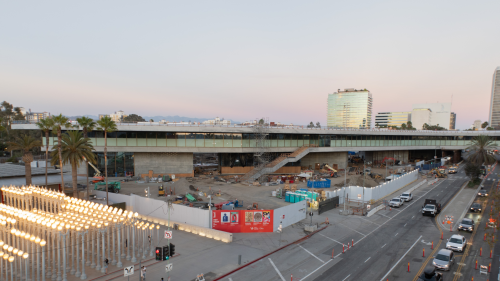Plenty of streets across the country aren’t designed for walking. They are roadways too wide to cross, or without sidewalks, or pockmarked with billboards, or with buildings set back too far. But that makes vibrant, safe, walkable, and architecturally distinctive streets all the more prized and cherished in America’s cities and towns.
Recently, the American Planning Association (APA) released its annual list of “Great Places in America,” including ten great streets. The APA, a national organization of city and community planners, made the selections based on a street’s personality and sense of place—the architectural character of the buildings along it, the landscaping and public spaces interwoven, plus the pedestrian activity and social interaction that occur there. Special emphasis was placed on “complete” streets, i.e., those that accommodate all users and modes of travel, not just vehicles.
The winners this year include roadways in big cities like Washington, D.C., and small towns like Galena, Illinois. They range from the famous—Santa Monica Boulevard, immortalized in song—to the faraway, in Hawaii. Mostly, though, they are concentrated in the eastern half of the country, in historic, established communities such as Portsmouth, New Hampshire, and Woodstock, Vermont, that have preserved their appeal or undergone some revitalization.
The implication for ULI members is that character matters. Streets with personality take on a life of their own. They are places where people want to be—not only to visit, but also to live and work. That translates into improved sales and rents. Not every new development or redevelopment can occur in places with existing urban or small-town charm, but walkable designs and town center–like functionality can be replicated, from wide sidewalks and storefront awnings to tenant selection and community events.
Below are the top ten “great streets” selected this year:
Ten Great Streets | |||
| Street | City/State | Metro Area | Characteristics |
| Santa Monica Boulevard | West Hollywood, CA | Los Angeles | A three-mile (4.8-km) stretch between L.A. and Beverly Hills was reconstructed and redesigned as a complete street; it is now known for public art and festivals. |
| U Street, N.W. | Washington, D.C. | D.C. | Once the epicenter of African American businesses, a seven-block area has seen a return of its vibrancy, thanks to new housing and music venues. |
| Front Street | Lahaina, on Maui, Hawaii | None | A tourist destination steeped in history, a five-block stretch underwent a facelift to widen sidewalks; it is now the site of monthly concerts and city events. |
| Main Street | Galena, IL | None | This popular tourist spot presents a nearly unbroken line of 140 buildings from the 19th century; a planning effort led to infrastructure improvements. |
| Main Street | Nantucket, MA | None | A popular summer resort town, it is also a historic district with cobblestone streets; newer zoning and master plans limit vehicles and encourage density. |
| Washington Avenue | St. Louis, MO | St. Louis | This once-deteriorating downtown corridor received a boost from city investments, including streetscapes with LED lights and a zipper paving pattern. |
| Market Street & Market Square | Portsmouth, NH | Portsmouth | The square dates back 200-plus years; a downtown plan added brick sidewalks, benches, and parking controls, and it’s once again the center of city life. |
| Davis Street | Culpeper, VA | Outside D.C. | Anchored by a historic train depot, a three-block stretch is the town’s heart; a revitalization effort included improved facades and historic streetlamps. |
| King Street | Alexandria, VA | D.C. | Approval of special zoning in the historic district encouraged a mix of businesses and outdoor dining, fostering independent retailers and restaurants. |
| Downtown Streetscape | Woodstock, VT | None | A classic 19th-century New England town center, with a four-street district offering a mix of pocket parks, mixed-use buildings, and community events. |
Source: American Planning Association.
See the APA website for more information on the Great Streets selection criteria, further information about each, and photographs.




